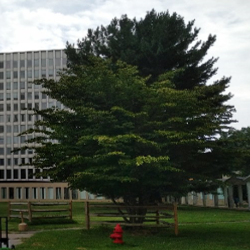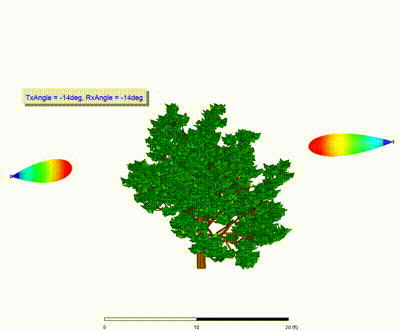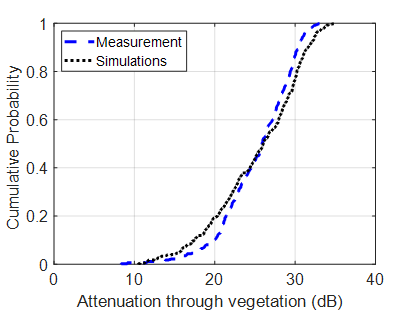Attenuation in Vegetation
NIST conducted two measurement campaigns to collect channel propagation data on seven different types of trees using the Terragraph* 60.5 GHz phased-array-based channel sounder. In order to explore the seasonal effects on channel propagation through vegetation, one measurement campaign was conducted during the summer on seven trees, followed by another campaign during the winter on a subset of three trees, after the leaves had withered for comparison. Measurements were collected at 14 distinct receiver locations around each tree for a fixed transmitter location. For each measurement scenario, simulations were run using ANSYS HFSS* (High Frequency Structure Simulator) software on CAD models of the trees for validation.
Attenuation through vegetation at 60.5 GHz is shown on the figure below: Photograph of European Nettle tree measured on NIST Gaithersburg campus (left). Tree model with antenna beam steering used in ANSYS HFSS SBR*+ solver (middle). Comparison of penetration loss CDF between measured and simulated tree (right).



*Any product or brand name mentioned on this page does not constitute an endorsement by NIST.
Contacts
Radio Access and Propagation Metrology Group
-
(301) 975-3685

